Data Mesh and Data Fabric are two approaches to enterprise data management and integration. In a data-driven world, effective data architectures are critical to meet growing demands. As alternative concepts, Data Mesh vs. Data Fabric is understood as opposing approaches, but ultimately pursuing the same goal of improving data management. While Data Mesh focuses on decentralised responsibility and collaboration, Data Fabric focuses on a unified infrastructure and data integration.
This article will highlight the differences, similarities and application areas of the two concepts to help companies choose the right approach for their specific needs: Data Mesh vs. Data Fabric? Which approach suits you?
Inhaltsverzeichnis
The concepts of data mesh and data fabric
Data Mesh is a concept in which the Responsibility for data in a company on the individual teams and domains distributed. Each team develops and operates its own data products and services. The aim is to promote agility and innovation in data processing and to reduce bottlenecks in centralised data processing. Data architectures to avoid.
Data Fabric refers to an architecture or infrastructure that makes it possible, Data seamlessly across different systems and platforms and manage them across the board. It provides a unified view of Data regardless of their location or format and enables real-time data integration, analysis and use. A data fabric facilitates data integration, availability and consistency in complex data landscapes.

Find out in our blog post how companies can realise the full potential of their valuable assets and generate the most value from their data through effective data management.
Data Mesh vs. Data Fabric
Although both Data Mesh and Data Fabric are concepts that aim to improve the management of data in organisations, there are some important differences between them:
Architecture
Data Mesh promotes a decentralised data architecturewhere each team develops and operates its own data products and services. The data is stored in decentralised data warehouses that are managed by the individual teams. There is no central data infrastructure, but a multitude of decentralised components that are connected via Interfaces (APIs) communicate with each other.
Data Fabric, on the other hand, refers to a Uniform architecture or infrastructurethat allows data to be connected and managed seamlessly across different systems, platforms and locations. There may be a central data infrastructure that acts as a link between the different data sources. The data is abstracted in a logical data model to ensure a unified view of the data.
Data access
In the data mesh approach, the Data access the responsibility of the individual teams. Each team provides its own data products and services and controls access to that data. Other teams can access the data by using the corresponding data products or services.
In a data fabric environment, the Data access usually via a central interface or an API gateway facilitates. There is a unified view of the data, regardless of its location or format. The Data Fabric enables users to retrieve and use data from different sources seamlessly and consistently.
Data security
At Data Mesh, the responsibility for the Data security first and foremost for the individual teamswho are responsible for their own data products. Each team is responsible for complying with security standards and policies and implementing appropriate security measures. Data security is therefore managed in a decentralised manner.
Data Fabric enables a Centralised data security management. A unified security architecture can be implemented that includes policies, access controls, encryption and other security mechanisms. The security measures are managed and applied at a higher level.

Data security and data protection are central functions for securing operational data and value chains. Protect yourself in the best possible way and get comprehensive advice on this topic:
Data security - the most important basics on the topic of data security
Data governance
Data Mesh lays a strong Focus on team ownership in relation to Data governance. Each team is responsible for its own data quality, use and management. Mechanisms and processes are put in place to promote cooperation and collaboration between teams on data governance.
Data Fabric can be a Centralised data governance which establishes policies, standards and processes for data management and use at the enterprise level. Data governance is coordinated and implemented by a central body to ensure uniform standards and controls.

Data governance enables functioning frameworks and standards for the management, access control and use of big data to optimally exploit the potential of data analytics.
Data Governance: Fundamentals, Challenges and Solutions in Data Management
Scaling
Data Mesh is designed to be used in Companies with complex and scaling data landscapes effectively to function. It enables scalable data processing by distributing responsibility among teams. Scaling is achieved by expanding team structures and capacities.
Data Fabric, on the other hand, focuses on the Scaling data integration and management across different systems and platforms. It thus enables the seamless connection and processing of large amounts of data in a consistent and efficient manner.
These differences show that Data Mesh and Data Fabric are different concepts for data management. Data Mesh emphasises decentralised responsibility and collaboration, while Data Fabric aims for a unified infrastructure and centralised control. The choice between the two depends on the specific requirements, corporate structure and preferences of the company.
Do you have questions about Data Mesh or Data Fabric for your company? Then please do not hesitate to contact us. We are happy to be at your disposal at any time and offer non-binding advice.
Differences to the Data Lake
Data Mesh, Data Fabric and Data Lake are Three different approaches to managing data in companies. A data lake is a centralised, storage-based approach to storing large amounts of structured, semi-structured and unstructured data. It allows raw data to be captured and stored in its original format, without predefined structures or data modelling. A data lake offers flexibility in data analysis and processing, as the data can be used for different applications and analyses.
In contrast, Data Mesh focuses on decentralised team responsibility and collaboration. Each team is responsible for the data under its purview and develops and operates its own data products and services. Data Mesh promotes agility, scalability and innovation by distributing responsibility for data among the individual teams.
Data Fabric, on the other hand, focuses on a unified infrastructure and data integration across different systems and platforms. It provides a coherent view of data, regardless of its location or format. Data Fabric enables seamless data integration and management across different systems and supports infrastructure scaling for efficient data processing.
Data Lake vs. Data Mesh vs. Data Fabric
Accordingly, the Main difference to the Data Lake in that Data Mesh and Data Fabric additional layers of responsibility, governance and integration offer. Data Mesh distributes responsibility among teams and promotes decentralised data management, while Data Fabric provides a unified view of data and seamless integration across different systems. Data Lakes, on the other hand, are often designed as centralised, low-cost storage solutions for large amounts of data.
Even though they are different approaches, in some cases they can be combined. For example, a data lake can serve as a base on which data mesh or data fabric principles are applied to enable decentralised data responsibility or a unified data infrastructure. The choice of the appropriate approach depends on a company's specific requirements, goals and data landscape.

Learn why the data lake has become the crucial data analysis tool in the course of digitalisation and how Industry 4.0 use cases are built on a suitable data platform based on the data lake concept.
When should which concept be used?
Data Mesh is well suited in the following situations:
- Decentralised responsibilityIf an organisation is made up of different teams responsible for data and wants to promote the agility and autonomy of these teams, Data Mesh is suitable. It allows individual teams to develop and run their own data products, fostering innovation and efficiency.
- Scalability: If the organisation requires a high volume of data processing and analysis, data mesh can help improve scalability. By distributing data responsibility across different teams, the work can be spread across multiple shoulders, which can lead to better scalability and faster implementation.
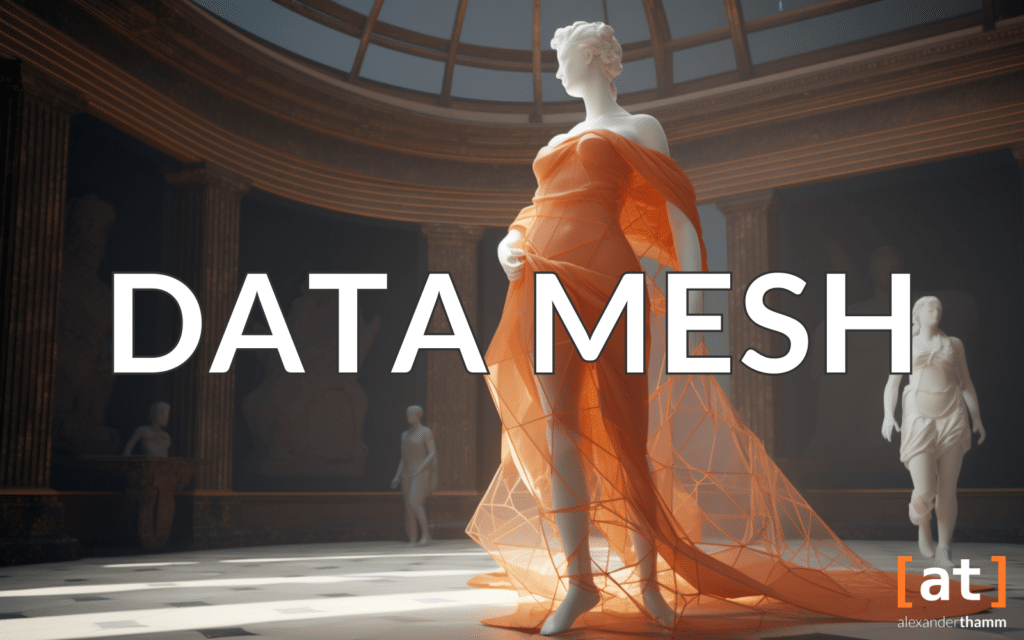
Data Mesh: Revolutionising data management. Discover decentralised agility and improved information sharing. How do businesses benefit? Learn more.
Introduction to Data Mesh: How companies benefit from decentralised data management
Data Fabric is well suited for:
- Data integration and consolidation: If the company needs to integrate data from different sources, systems or cloud platforms, Data Fabric makes sense. It provides a unified infrastructure and data integration across different systems to ensure a consistent view of the data.
- Data consistency and harmonisation: When ensuring that data is consistent and harmonised, regardless of its origin or format, Data Fabric is suitable. It supports data harmonisation and transformation processes to enable consistent use and analysis of data.
It is important to note that these recommendations are not absolute and there may be situations where a choice of data mesh vs. data fabric, a combination or adaptation of approaches is required. Each organisation should consider its specific requirements, objectives and data landscapes to decide which approach is most appropriate.
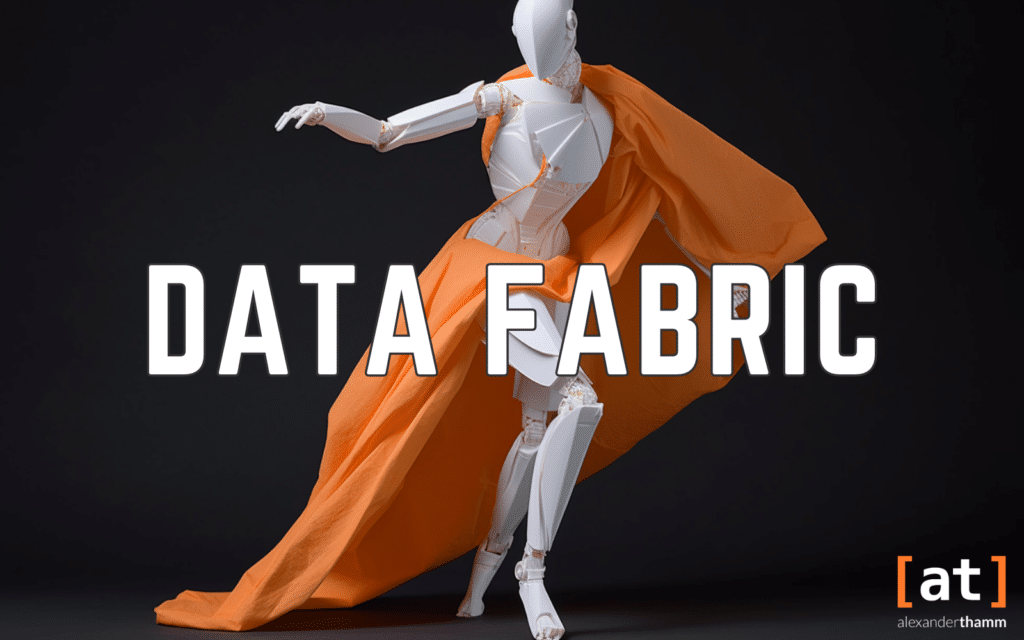
In a data-driven world, Data Fabric transcends traditional boundaries. Learn how optimised data flow opens up new business opportunities.
Application examples for Data Mesh and Data Fabric
Application examples for Data Mesh
- E-commerce company: An e-commerce company can use Data Mesh to enable different teams to develop and run their own data products. For example, the customer support team can create a data product to analyse customer feedback, while the product data team can develop a data product to manage product catalogues. By distributing responsibility, the teams can work in an agile way and react quickly to changing requirements.
- Financial servicesIn the financial services industry, data mesh can be used to improve data processing and analytics in various domains such as risk management, payment processing and customer analytics. Each team can develop its own data products to meet specific needs, while at the same time Data quality and safety is guaranteed.
Application examples for Data Fabric
- Multi-cloud integrationWhen using multiple cloud platforms, Data Fabric can be used to create a unified view of data across different cloud environments. Businesses can share data from different Clouds and on-premise systems to enable comprehensive data analysis and use.
- Industrial IoT applicationsIn industry, data fabric concepts can be used to collect data from different sources. IoT devices, sensors and machines and analyse them in real time. Unified data infrastructure and integration make it possible to gain insights from the data, identify maintenance needs and improve productivity.
How can data mesh and data fabric be linked?
Although Data Mesh and Data Fabric have different focuses, they can be connected to each otherto develop a comprehensive data strategy and to Advantages of both approaches to use.
One way of linking the two is to do so, Data Fabric as the basic data infrastructure to provide a platform on which the Build a data mesh concept can. Data Fabric provides a unified view of the data, enables data integration across different systems and supports the scalability of the data infrastructure. This gives teams in the data mesh a solid foundation to access high-quality and integrated data without having to worry about the technical aspects of data integration. Data Fabric can also provide mechanisms for data quality assurance, data governance and security that are relevant to the data mesh.
Another approach is to use the Integrate principles of the data mesh into the data fabric strategy. This means that responsibility for the data is not only distributed to central units, but also to the individual teams in the data fabric. Each team becomes a "data product owner" for the data it manages. This promotes decentralised responsibility and collaboration, as envisaged in the data mesh concept. At the same time, the data fabric infrastructure ensures that data integration, data quality and data governance are consistent and efficient across all teams.
In addition, Data Mesh can benefit from Data Fabric's data catalogue and data discovery capabilities. Data Fabric provides mechanisms for managing a central Data cataloguewhich documents the available data products and services. This makes it easier for teams in the data mesh to discover and access the available data products and promotes collaboration and reuse of data.
It should be noted that the linking of data mesh and data fabric requires a Careful planning, coordination and agreement requires. The organisation must ensure that the principles and processes of both approaches are aligned and that the technical infrastructure is configured and deployed accordingly. However, the combination of data mesh and data fabric can enable a powerful data strategy that encompasses decentralised responsibility and collaboration as well as unified infrastructure and data integration.
Conclusion: For whom are Data Mesh and Data Fabric useful?
The choice of Data Mesh vs. Data Fabric depends on the specific requirements and goals of an organisation. Data Mesh is well suited for organisations that want to promote agility and team autonomy, while Data Fabric makes sense when data integration, consolidation and data consistency are key.
Importantly, the two approaches are not mutually exclusive and in some cases can be combined or linked. Companies can benefit from the advantages of both approaches by providing a unified data infrastructure while encouraging decentralised accountability and collaboration among teams.
Ultimately, the choice between data mesh and data fabric should be carefully considered based on the specific needs of the organisation, the data landscape and the objectives. A thorough analysis of the requirements, alignment with the teams and a holistic data strategy can help to make the best possible decision and effectively manage data in the organisation.
Do you have questions about Data Mesh or Data Fabric for your company? Then please do not hesitate to contact us. We are happy to be at your disposal at any time and offer non-binding advice.

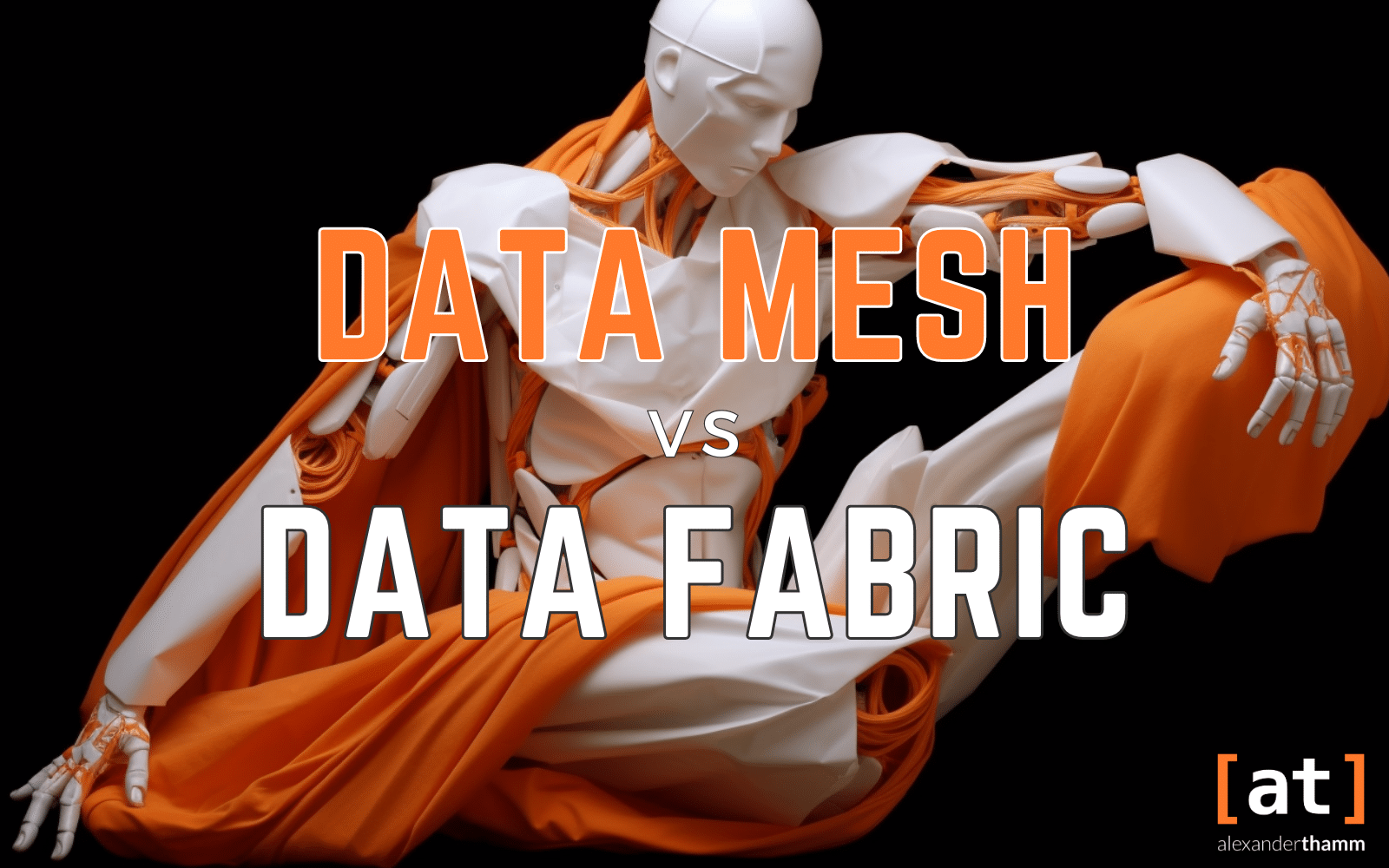




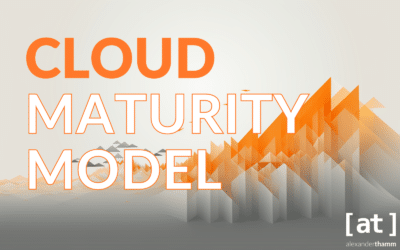
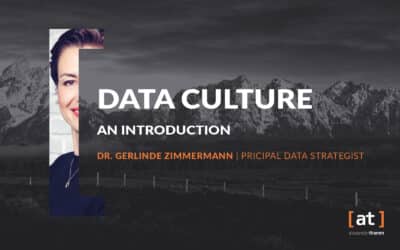
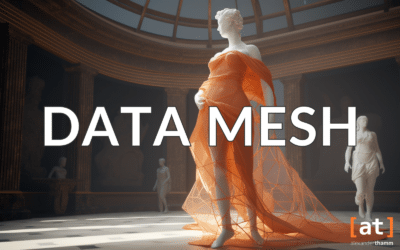


0 Kommentare